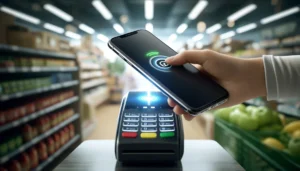Key Advantages of NFC Payment Methods
Near Field Communication (NFC) acts as a conduit for contactless communication between devices close together, often within 4 cm, to facilitate a connection. This technology is extensively leveraged for various purposes, prominently for making payments with mobile phones and leveraging digital wallets. The main advantages of utilizing NFC for payments consist of:
Near Field Communication (NFC) acts as a conduit for contactless communication between devices close together, often within 4 cm, to facilitate a connection. This technology is extensively leveraged for various purposes, prominently for making payments with mobile phones and leveraging digital wallets. The main advantages of utilizing NFC for payments consist of:

- Ease of Use: Enabling swift and hassle-free payments, NFC allows consumers to pay by simply tapping their device against a point-of-sale terminal.
- Quick Transactions: With NFC, payment processes are significantly expedited, completing in just a few moments, a stark contrast to older, more traditional methods.
- Enhanced Security: NFC payments are safeguarded by high-level encryption and the use of dynamic, transaction-specific data, making unauthorized interception extremely difficult.
- Multi-functionality: NFC’s utility extends beyond financial transactions to include electronic ticketing, secure access systems, and effortless data transfer between devices.
- Widespread Compatibility: NFC technology is integrated into a vast range of smartphones and devices, accommodating a multitude of applications other than payments, such as wireless device pairing and scanning of smart tags for information.
- User Privacy: NFC payments often include features that protect user privacy, ensuring that personal information is not shared with merchants during transactions.
- Global Acceptance: With its growing presence in retail and service locations worldwide, NFC allows for seamless payments globally, making it convenient for international travelers.
These features elevate NFC to a preferred status for enterprises and consumers looking for a method of payment that is not only secure and fast but also globally accepted and protective of user privacy.
